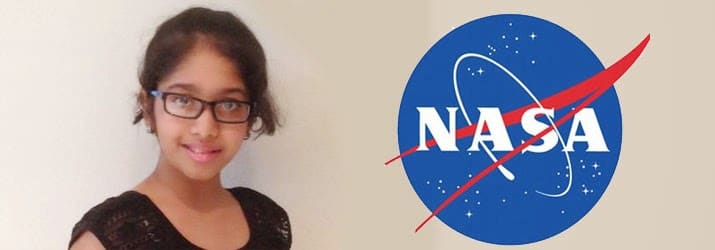 |
| Prerana Pai. image source: timesofap |
An 11-year-old Indian student is the lone participant from the UAE who has got her two experiments approved by NASA which will be launched into space under the space agency’s programme for budding young scientists.
Two experiments of Prerna Pai, a seventh grader at Sharjah’s Delhi Private School (DPS), are among the 100 selected experiments that will be fired into space by NASA on June 26, Gulf News reported.
Among those selected under the programme are seventy-five American students besides 25 students from the rest of the world.
Pai, an aspiring scientist, has been a regular participant in NASA student activities.
NASA had launched its Cubes in Space (CIS) Programme in May and had invited students from around the world in the age group of 11-14 to devise experimental payloads for space.
“I had to think a lot when I learnt about this contest and sent them (NASA) many proposals. My science teacher has always encouraged me to think out of the box and that inspired me.
“Once my ideas were selected, NASA sent me a kit into which I had to place my experiments and mail it to them. I was so thrilled by the news that I even dashed off a thank-you note to NASA,” Gulf News quoted Pai as saying.
She submitted two experiments that she called “To stick or not to stick” and “time and pressure”.
The first experiment is about studying the manner in which different adhesives are likely to behave in space in the absence of atmospheric pressure.
For this, Pai used a thermocol cube of 12 pieces in which each corner was stuck using a different kind of adhesive such as modelling clay, wax, cello tape, metal wire, thread, school glue and super glue.
The second involves two tiny bottles – one made of plastic and the other of glass – sealed with a modelling clay cork and placed in a cube. The experiment will focus on how the bottles react to lack of atmospheric pressure: Will they disintegrate, get damaged or remain intact?
Once the experiments are back from space and mailed to her, Pai intends to begin research on the effects, film the results and mail them back to NASA.

